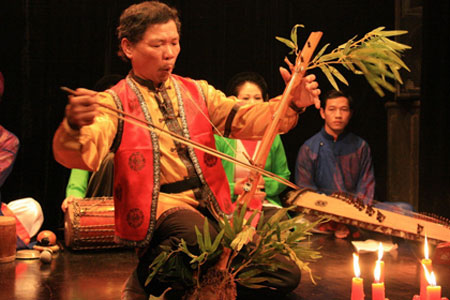This term, popular among the Ba Na and the E De, is used to name the single-stringed fiddle played by some ethnic groups in the Truong Son-Tay Nguyen region (Ba Na, Gia Rai, E De, Xo Dang, Pako, and Hre, etc.).

The main part of the instrument consists of a 50 to 70cm long bamboo tube or round wooden section. Frets are fixed on the main part and the string is hung along its length. The bow is made of a small thin bamboo bar; the player rubs the outside of the bow on the string to produce sounds.
Though its structure is quite simple, the distinctiveness of this instrument resides in the way it is played. The player holds a thread that is linked to the string in his mouth to amplify and transform the sounds. While bowing the string and touching the frets to produce pitches, the player changes the aperture of his mouth according to the tune. Thus, the sounds are altered, almost evoking human pronunciation. Those who are familiar with the sounds of the k’ni and who understand the vernacular may catch the message of the tune; this is why people say that the k’ni sings. The E De has added cho nac narration (type of song) to k’ni to replace human voice.
Due to this characteristic, the k’ni has become an instrument used mainly by young men to express their feelings to their girlfriends. Sometimes, the k’ni is also played to accompany lament songs at funerals.